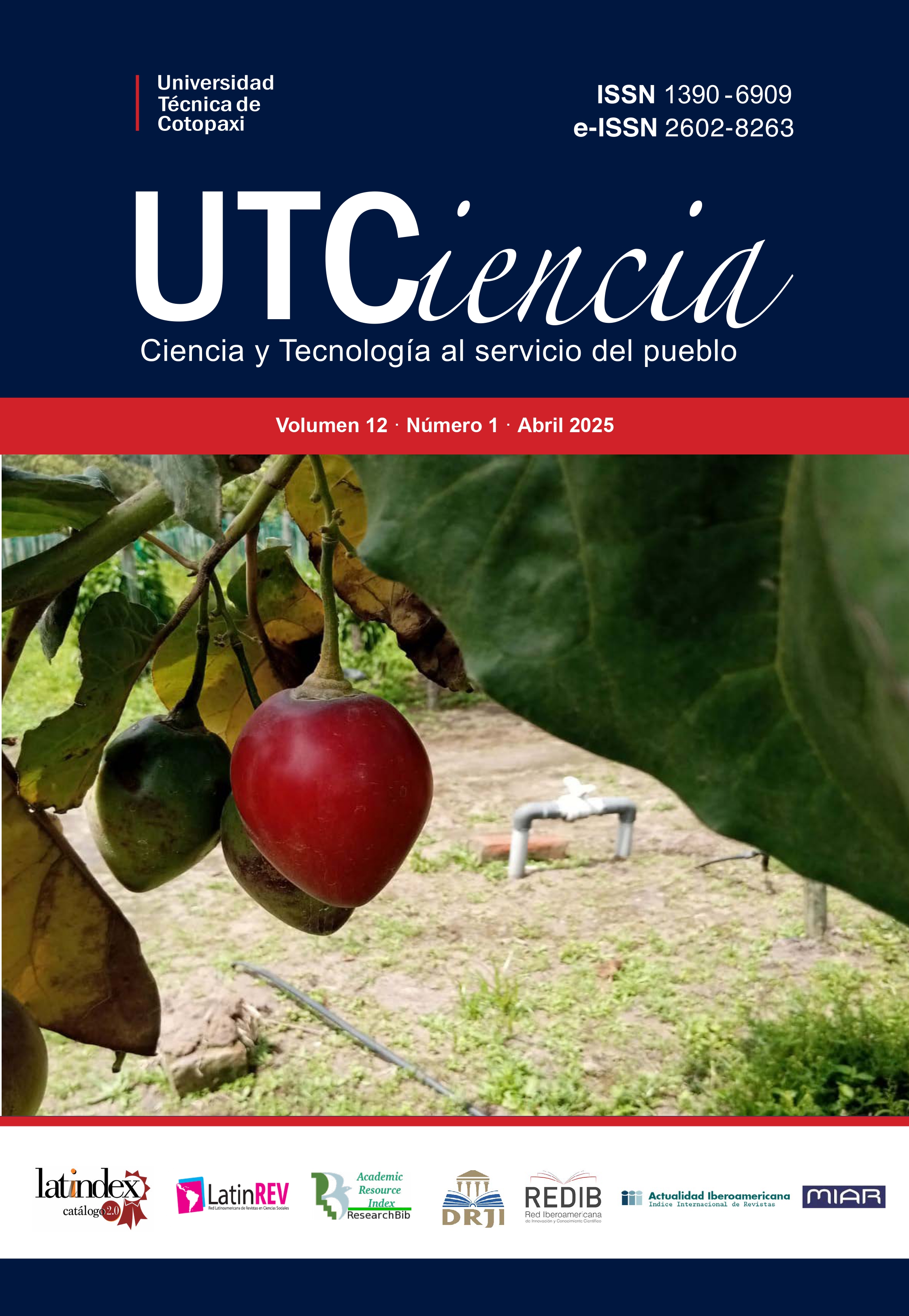Control of Candidatus Liberibacter solanacearum and Its Vector Bactericera cockerelli in Tree Tomato (Solanum betaceum)
Control of Candidatus Liberibacter solanacearum and Its Vector Bactericera cockerelli in Tree Tomato (Solanum betaceum)
Abstract
The tree tomato has great qualities that provide a series of benefits in human nutrition and health, which is why the present study was carried out at an altitude of 2,710 meters above sea level. Having as objectives: to study the behavior of Candidatus Liberibacter solanacearum and determine the environmental impact caused by the control of the Bactericera cockerelli vector in tree tomato (Solanum betaceum) ecotypes. In the methodological part, a statistical analysis of PCA principal components was carried out to determine the determining variables of the behavior of the ecotypes, to identify the infestation of Candidatus Liberibacter solanacearum, PCR tests were used, the environmental impact was evaluated using the Leopold matrix. Candidatus Liberibacter, in the control methods using gentamicin sulfate and oxytetracycline hydrochloride for: nursery and field (C), in the field (A1) and the witness (A0). The resistant ecotypes were: Granel, Atuntaqui and Providencia, with the molecules: imidacloprid, asoxystrobin, tridemorph, abamectin, pyridaben, formethanate, fipronil, profenofos and thiamethoxan for the control of Bactericera cockerelli. Concluding that there are ecotypes resistant to the disease in development, it is possible to control Bactericera cockerelli by applying the molecules: (acephate and imidacloprid); cyromazine; (spirotretamat and buprofezin); formathanate, generating a negative environmental impact, since the toxicological category of pesticides is type II – moderately dangerous; altering air quality, biodiversity and even the health of the farmer.
Downloads
Los autores que publican en esta revista están de acuerdo con los siguientes términos:
- Los autores conservan todos los derechos morales y patrimoniales de sus obras, cediendo solamente a UTCIENCIA el derecho a la primera publicación de éste. En consecuencia, los autores pueden realizar otros acuerdos contractuales independientes y adicionales para la distribución del artículo o texto.
- Los autores/as conservarán sus derechos de autor y aceptan la licencia de distribución de UTCIENCIA, la cuál es Licencia de Reconocimiento - Compartir Igual Creative Commons.
- Los autores/as pueden realizar otros acuerdos contractuales independientes y adicionales para la distribución de la versión del artículo publicado en esta revista (p. ej., incluirlo en un repositorio institucional o publicarlo en un libro) siempre que indiquen claramente que el trabajo se publicó por primera vez en esta revista.
- Se permite y recomienda a los autores/as a publicar su trabajo en Internet (por ejemplo, en páginas institucionales o personales) sólo una vez que sean publicados en la revista UTCIENCIA, ya que puede conducir a intercambios productivos y a una mayor y más rápida difusión






